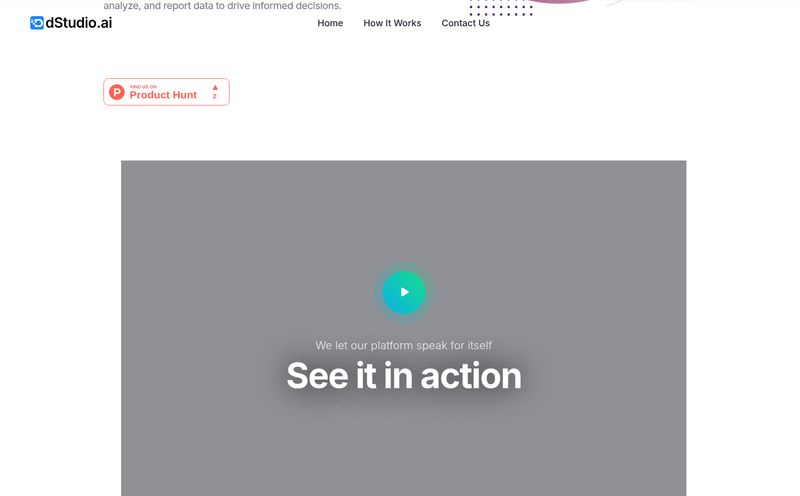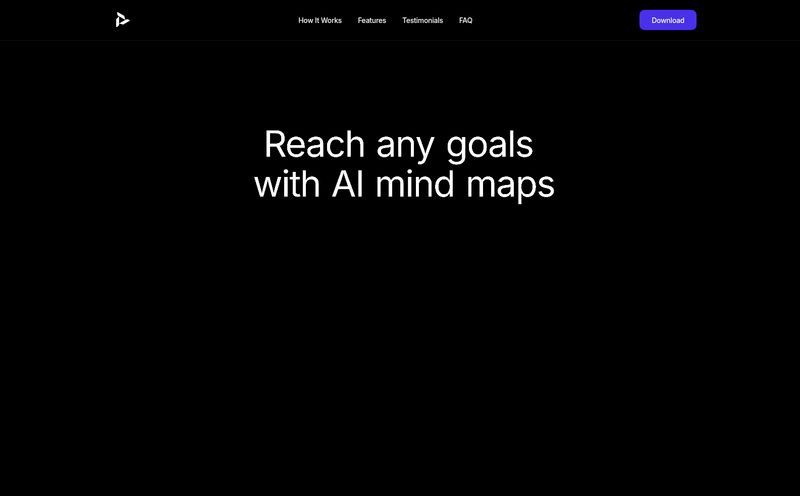We’ve all been there. You pour your heart and soul into a project—a new website design, a killer blog post, a marketing campaign strategy—and you send it off to the client for feedback. You wait. And you wait some more. Then, the email finally lands in your inbox. Your stomach does a little flip-flop. You open it, and the message simply says: "Not quite right. Can you try again?"
Ugh. It’s a soul-crushing moment. No context. No direction. No emotion. Just a vague rejection that sends you right back to the drawing board, completely in the dark. For years, this has been the bane of existence for agencies, marketers, and writers like me. The endless email chains, the poorly written briefs, the scheduled calls just to clarify a single point… it’s a massive time sink. It’s friction. And frankly, it’s just not a great way to work.
So when I stumbled upon a tool called askInput, my curiosity was definitely piqued. It calls itself a “voice-thought” app, designed to replace all that tedious back-and-forth with something much more human: your voice.
So What on Earth is a Voice-Thought App?
Imagine you could just… talk your feedback. Instead of trying to translate your thoughts into a perfectly crafted email, you just hit record and explain what you’re thinking, what you’re feeling, and what you need. That’s the core idea behind askInput. It’s a platform designed to capture client thoughts and creative briefs through short voice notes.
Think of it less like a formal meeting and more like leaving a detailed, thoughtful voicemail for a project. It’s built for speed and clarity, aiming to capture the tone and emotion that text just flattens out. Suddenly, a client’s “Hmm, I’m not sure about this part” isn’t a frustrating dead end; you can hear the hesitation, the question in their voice, and you instantly have a better idea of what they mean.

Visit askInput
Who Is This Really Built For?
While anyone could probably find a use for it, askInput seems laser-focused on a few key groups:
- Marketing & Creative Agencies: This is the big one. Managing feedback from multiple clients on multiple projects is a logistical nightmare. This could streamline that entire process.
- Writers & Content Creators: I can personally attest to the pain of getting a vague brief. Getting a voice brief where a client can just ramble about their vision for a few minutes? That sounds like heaven.
- Business Owners & Solopreneurs: If you're juggling everything yourself, you don't have time for a 30-minute call just to approve some ad copy. A quick voice note exchange is way more efficient.
Basically, if your job involves creating something for someone else and then getting their opinion on it, you’re the target audience. It’s for people who value clarity and are tired of playing email tag.
The Features That Actually Move the Needle
A tool is only as good as what it can do. So, let's break down the core functions of askInput and what they mean in the real world.
Creating Voice Briefs That Don't Suck
This is the foundation. Instead of typing out a project brief in a Google Doc, you or your client can just record it. I've always felt that the best briefs come from conversations, not forms. A voice brief is the next best thing. You can convey excitement about a new idea or urgency about a deadline in a way that ALL CAPS in an email just can’t replicate. It sets the emotional tone for the project from the very beginning.
Capturing Responses Without the Phone Tag
Once you send your work, the client doesn’t have to write a novel in response. They can open the request in the askInput app or platform, look at your work, and record their immediate thoughts. This is huge. It captures that gut reaction, the initial impression, before they overthink it and water it down into polite-but-useless corporate speak. This leads to much richer, more honest feedback.
The AI Co-Pilot for Content Creation
Here’s where it gets really interesting. askInput has an AI feature that can take a voice response and help rewrite it or even generate content from it. Say a client loves a testimonial they received and forwards you the voice note. The app can help transcribe and polish that into a perfect, ready-to-use quote for their website. It’s a fascinating blend of raw human thought and AI-powered efficiency. I have my reservations about becoming too reliant on AI, but as a brainstorming partner or a first-draft generator, it's an incredibly powerful concept.
My Honest Take: The Good and The Not-So-Good
Alright, no tool is perfect. After digging in, I have some strong feelings. The speed is the most obvious win. The time I’ve wasted trying to decipher a cryptic email could probably be measured in full workdays. Getting a 2-minute voice note that’s packed with nuance is, without a doubt, a faster and better way to get feedback. The first time you hear the genuine excitement in a client's voice, you'll get it. It’s a connection that text just can’t make. The quality of the feedback is just... deeper. You get the 'what' and the 'why' at the same time.
However, it’s not all sunshine and rainbows. The biggest hurdle? You have to get your clients to actually use it. Some people are just set in their ways. They live in their email inbox, and asking them to adopt a new platform, no matter how simple, can be a tough sell. There's also the fact that some people just aren't comfortable speaking their thoughts aloud; they prefer the safety of a backspace key. And I do worry a little about the AI. It's a fantastic assistant, but there's a fine line between assistance and dependance. We still need to be the strategic thinkers.
| Feedback Method | Clarity & Nuance | Speed | Adoption Barrier |
|---|---|---|---|
| Long Email Chains | Low (Often vague, lacks tone) | Slow | None |
| Scheduled Calls/Meetings | High (Real-time conversation) | Slow (Requires scheduling) | Low |
| askInput Voice Notes | Very High (Captures tone & emotion) | Fast (Asynchronous) | Medium (Requires client buy-in) |
The Big Question on Pricing
So, how much does this magical time-saver cost? That’s the million-dollar question. As of my review, I couldn’t find a public pricing page on their site. This isn't uncommon for new B2B SaaS tools. It usually suggests one of two things: they're still finalizing their pricing tiers, or they're focused on a custom/enterprise model where they quote based on the agency or team size. Your best bet is to reach out to them directly for a demo and pricing details.
Is askInput Worth Your Time?
My verdict? A resounding maybe. And I mean that in the best way possible. If you’re an agency or freelancer constantly battling the friction of client communication, I absolutely think you should investigate askInput. The potential to save time and get genuinely better, more insightful feedback is immense. It could fundamentally change your workflow for the better.
If you have clients who are less tech-savvy or resistant to change, you might face an uphill battle. But for the right kind of client relationship, this tool feels less like a simple app and more like a new philosophy for creative collaboration. It's a step toward a world with fewer misunderstandings and more projects that hit the mark on the first try. And that's a future I'm excited about.
Frequently Asked Questions About askInput
- 1. Do my clients have to download an app to use askInput?
- Based on the platform's description, yes, it seems clients would need to engage with the askInput app or platform to leave their voice feedback. This creates a centralized and streamlined process.
- 2. Is askInput just for client feedback?
- While client feedback is a primary use case, it's also designed for creating initial voice briefs, internal team check-ins, and even generating polished content from raw voice notes using its AI features.
- 3. How is this better than just sending a voice note on WhatsApp?
- The main difference is organization and project context. askInput keeps all feedback tied to specific projects, making it easy to track. WhatsApp chats can become messy and unprofessional. Plus, askInput has the added AI rewriting and transcription capabilities.
- 4. What if my client doesn't like giving voice feedback?
- This is a potential challenge. The tool is best suited for clients who are comfortable with this method of communication. For others, traditional methods might still be necessary, meaning askInput would be one of several tools in your communication toolkit, not a complete replacement.
- 5. Can the AI rewrite an entire article for me from a voice note?
- The feature is described as "AI-assisted," which suggests it's more of a co-pilot than a fully autonomous writer. It's likely best for polishing transcripts, generating ideas, or creating shorter pieces of content like testimonials, rather than writing a full long-form article from scratch without human oversight.
Reference and Sources
- Information for this review was sourced from the publicly available data on the askInput platform.
- For more on the challenges of client communication, see "The Art of Client Communication" by the Forbes Agency Council.



